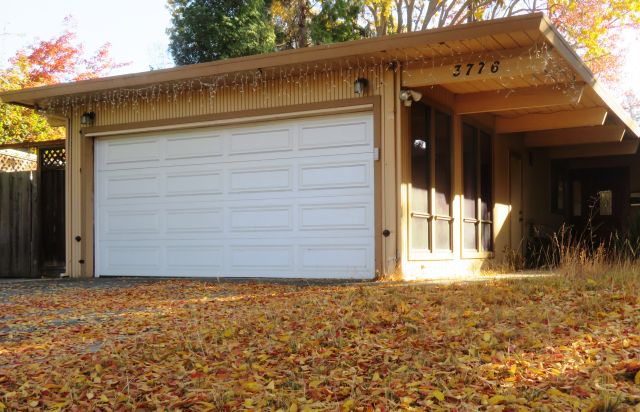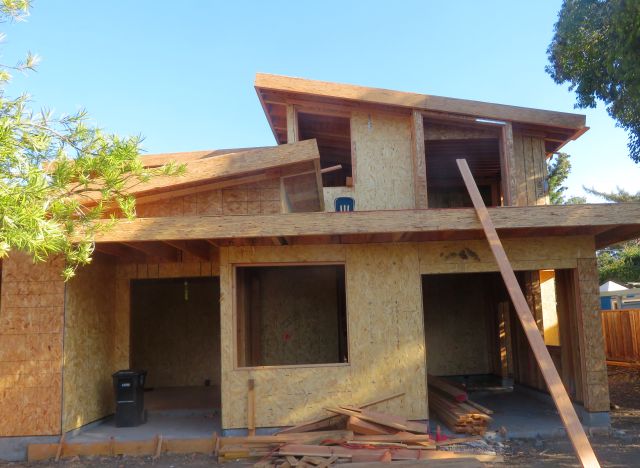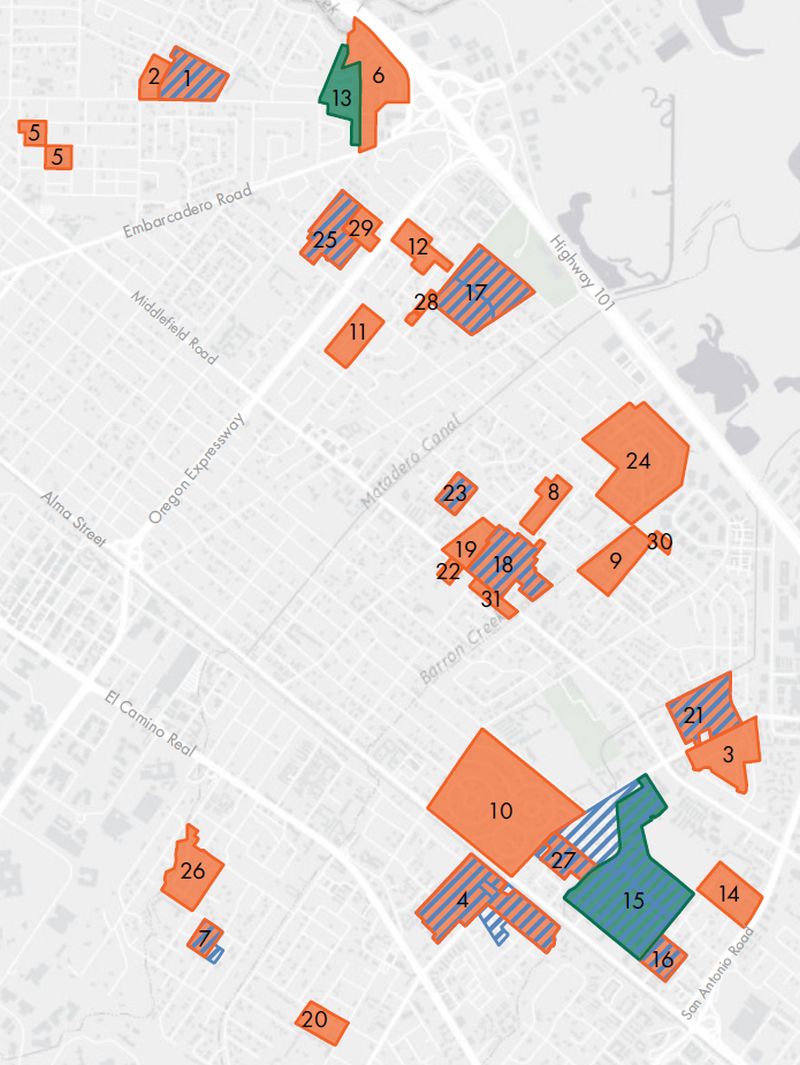
Teardown May Test Design Guidelines
 |
|
|
A proposal to rip down an Eichler home in the historic Fairmeadow subdivision may be the first test to determine how well Eichler Design Guidelines adopted last year by Palo Alto work.
Utopia Design and Construction seeks “demolition of an existing one-story, 1,410-square-foot home and construction of a two-story approximately 2,568-square-foot-home with an attached garage."
Bahar Masarati, architect and co-owner of Utopia, says the homeowner needs a larger home.
“The conditions of the existing home cannot provide for what they want to do,” she says. “We had no choice but replace it with a new home and try to go with the look of an Eichler house. What we’re trying to accomplish here is [produce a home] that if someone passes by, it does not look like something different.”
She says she worked with the Design Guidelines and found them helpful, as she worked with the city’s architect on the plans. Windows were arranged to privacy for neighbors, she says, and the second story was set back to make it less visible from the street.
“If an Eichler in good condition comes to us, if we are asked to restore it, we would love that. But the house has to have the potential,” Masarati says. “This house does not have that. The condition is not good. Financially it doesn’t make sense for the current owner to preserve it.”
Fairmeadow, known as the 'Circles' for the series of interlocking circles that make up its street plan, is historically important because of this street plan, which was deemed so remarkable that Fortune magazine ran an image of it on its cover in 1955. The tract was built starting in 1951.
Although quite some of the 284 homes in Fairmeadow have gotten second-story additions or been torn down and replaced, including one home earlier this year, many more homes remain intact as seen from the street.
Importantly, the area where the new demolition is proposed remains intact, with no second-story homes visible. (The curvature of the street blocks views of several two-story homes a block or so away.)
 |
|
|
If you visit Fairmeadow, you may notice that two-story and large replacement homes tend to cluster together, suggesting that a domino effect can take place after one demolition sets the tone.
The demolition from earlier in this year, also on Redwood Circle, was not affected by the new Design Guidelines because the permit process started before they were adopted.
This new proposal, which like all such home changes must go through 'individual review' by the planning department, may benefit from the new guidelines.
Although the guidelines are voluntary, and do not impose design standards or ban second stories or large replacement homes, they do seem to be working, says Amy French, Palo Alto’s planning chief.
The guidelines, according to the city, “include compatibility criteria for remodels, additions, and new construction within the City’s Eichler neighborhoods. The illustrated Guidelines provide advice and direction for undertaking work in ways that retain the architectural character of these neighborhoods.”
 |
|
|
It is notable that since the Eichler Neighborhood Design Guidelines were adopted in April 2018, things went quiet on the teardown front. For a time up to that point, it seemed, Eichlers throughout the city were being demolished or getting large ungainly additions, as land values soared.
“We have not had a lot of Eichler homes come in for [individual planning] review," French says. “A handful at most.”
French says no owners have asked for permission to take down an Eichler or add a story – until Utopia arrived.
Still, threats remain, says Monique Lombardelli, a broker who focuses on Eichlers. “The Eichlers that are threatened are on larger lots. Obviously the developer is looking at them for square footage to build.”
Over the years several neighborhoods have sought, and most received, special planning protection in the form of overlay zones that banned two-story homes. Since adoption of the guidelines, no tracts have sought such zoning.
French says she does not know why, adding, “Perhaps just the adoption of the guidelines worked, because they are helpful.”
 |
|
|
Also notably, although the guidelines allow for neighborhoods to seek added protection by making the rules mandatory within their neighborhood, no one has come forward to seek that, French says.
French says the guidelines are being used by consulting architects who work for the planning department when they meet with owners to determine what they can or cannot do with their homes.
“The rules are voluntary, but when people meet with a planner for individual review, [the planner] can refer to the guidelines,” French says. “They can use them to coax people to do what is right.”
Lombardelli agrees that the guidelines are “really helping." The guidelines “give people a path about how to care for their Eichlers," she says. "I think it’s been very good for the residents who want it. And I think it has been very good education. I think the more beautiful and the more consistent the communities are, the better they will last and thrive.”
Speaking of Fairmeadow Circles, French notes that the city did work to ensure the replacement home that was approved earlier this year will not invade neighbors’ privacy. “That happened just as approval for Eichler guidelines was finishing up,” she says.
 |
|
|
More than a decade ago, some residents in Fairmeadow had sought single-story overlay protection. Had that been achieved in this portion of the Circles, the current threat at 3776 Redwood would not be an issue.
French says there had been talk more recently in the Circles about such a move. But she has not been contacted from anyone in the tract recently. An overlay zone can cover a section of a tract, not the whole thing, if desired.
About the value of the Design Guidelines, she says, “I think it’s true, when a city adopts something, just the act of adopting these guidelines made a difference. At first, the idea was, they would be made mandatory and you need to use them every time you review a home.”
Still even though the guidelines are advisory only, French says, they can still work. “They’re more subtle. They’re not a hammer. But they are making a difference.”
- ‹ previous
- 557 of 677
- next ›



